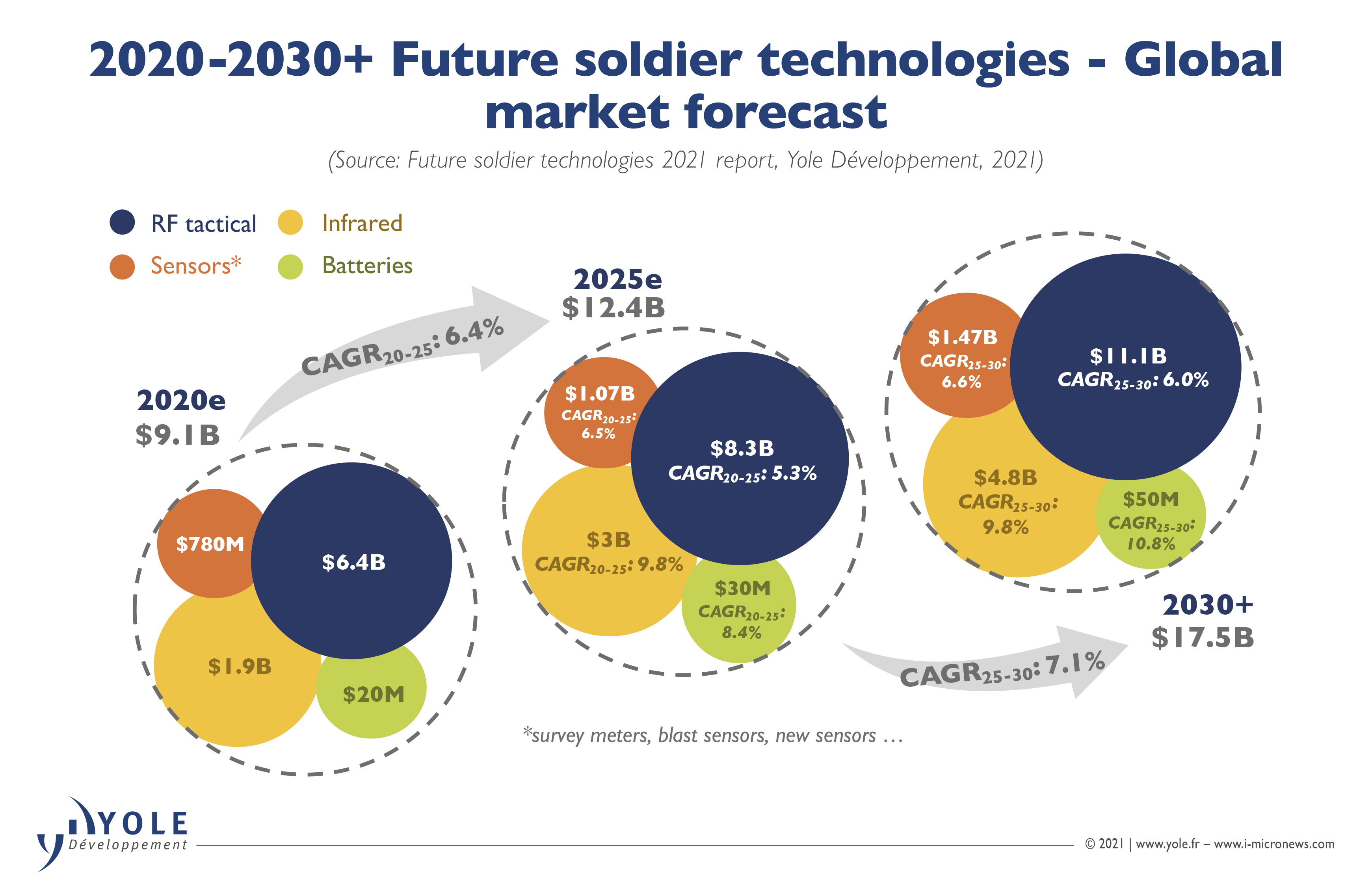Will future soldiers be made of Semiconductor?

“The global market for infantry equipment related to semiconductor technology will evolve from US$9.1 billion in 2020 to US$17.5 billion in 2030.” asserts Alexis Debray, Technology & Market Analyst, MEMS, Sensors & Photonics at Yole Développement (Yole). Although the usual narrative states that the world has enjoyed peace and prosperity since the end of World War II, in reality global military spending has grown from US$17 billion in 1949 to US$1,868 billion in 2019. In this context, Yole investigates disruptive technologies and related markets in depth, in order to point out the latest innovations and underline the business opportunities. Released today, the Future Soldier Technologies 2021 report analyses the current and future technologies for foot soldiers for better communications, enhanced lethality, mobility, survivability, and sustainability. This report gives the complete analysis of semiconductor related equipment for infantrymen: their applications, players, and markets, including infrared and radiofrequency, as well as sensors, batteries, exoskeletons, and future technologies. What are the economic and technological challenges of the future soldier technologies industry? What are the current world’s needs for defense applications? What are the dual-use strategies? What are the main companies involved in defense? Yole presents today its vision of the future soldier technologies.
As analyzed by Yole’s team in the new Future Soldier Technologies 2021 report, wars, of course, never really ended – and as Clausewitz wrote: “War is the continuation of politics by other means.” Though the rivalry between the USA and China is the main topic of today’s geopolitical scene, there are hotspots everywhere. Furthermore, the expansion is not only geographical: Space, internet, social media, and the electromagnetic spectrum are new domains where militaries are preparing to fight. In this context, the equipment and semiconductor technologies of infantrymen have adequately evolved. Inherited from the Vietnam War, infrared is a major technology of infantrymen, as is radiofrequency for communication and, more recently, for electronic warfare at the tactical edge. Other technologies, such as sensors and exoskeletons, have not developed as much. “Operational environment” is a key concept in military operations. It defines the platforms and technologies used on the battlefield. Choosing the wrong operational environment for a conflict can dramatically affect its outcome. By the end of the Vietnam War, the major military powers started to develop and adopt night vision devices thanks to technical progress made in the 1970s. During Operation Desert Storm in the 1990s, night vision was a major advantage for the US military and many operations occurred at night. As a result, for five decades, infrared technology has been one of the most important military technologies.
According to Eric Mounier, Director of Market Research at Yole: “At the end of the 2010s, during the War in Donbass, the Russia military was able to defeat Ukrainian operations without firing a single shot. Powerful electromagnetic devices suppressed communications and command, jammed GPS, shut down radars, and grounded aircraft operations. While electronic warfare and cyber operations are increasing, we may witness the convergence of communication, electronic warfare, Cyber, and Space domains. The future soldier will take part in all of these operations, fighting with the use of computing and electromagnetic technologies”. Contrarily, technologies related to other operational environments have not developed as much. Nuclear power has remained a deterrent technology and survey meters have not multiplied. Apart from the Japanese Aum Sect and incidents in the Syrian civil war, the use of biological weapons has been minimal, resulting in limited development in chemical sensors. Around 2050, it is expected that infantry technologies will evolve more to human/machine fusion, be it for brain-computer interface, ocular enhancement, auditory enhancement, or muscular control. However, we should remember that war is all about the unpredictable

































